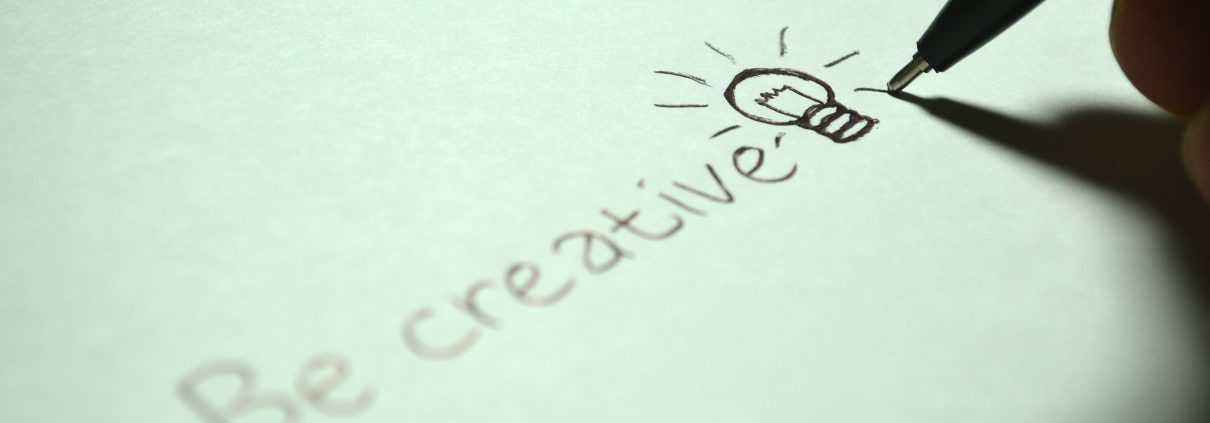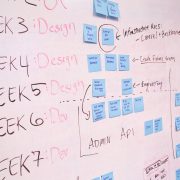Creativity in Business
How can we foster creativity and better ideas in the workplace. This article looks at some the theory and techniques behind business idea generation and management
Business creativity is the production of novel and useful ideas that are influenced by the characteristics of a person and environment. Novelty and useful ideas are two different things; Novelty is the creation of great, original, and cool ideas. The idea is novel if a firm newly adopts it but it was previously being used by other firms.
The example of novelty is Whatsapp, where messages can be exchanged between many people
What is Creativity
Creativity is the act of turning new and imaginative ideas into reality. Creativity is characterized by the ability to perceive the world in new ways, to find hidden patterns, to make connections between seemingly unrelated phenomena, and to generate solutions. Creativity involves two processes: thinking, then producing.
“Creativity is a combinatorial force: it’s our ability to tap into our ‘inner’ pool of resources – knowledge, insight, information, inspiration and all the fragments populating our minds – that we’ve accumulated over the years just by being present and alive and awake to the world and to combine them in extraordinary new ways.”
— Maria Popova, Brainpickings
- EXPECTED CREATIVITY: When its the part of the job to be creative (eg: Working as a creative director in the company)
- PROACTIVE CREATIVITY: people voluntarily submit ideas or solutions to a problem they discovered themselves
- RESPONSIVE CREATIVITY: required to show creativity for a certain problem (eg: this may specifically refer to a group made to tackle a particular problem.
- CONTRIBUTORY CREATIVITY: a person voluntarily generate ideas for a formulated problem (eg: helping a friend who is working on a different project)
What Makes People More Creative?
In the 80s, a Harvard Scientist Teresa Amabile made a model which specified 3 factors needed to become creative. These three factors are:
- First is Domain Expertise. Expertise, technical, procedural, and intellectual knowledge -these qualities and attributes are the basis of systematic thinking in a given domain.
- Next to it is Motivation. A critical element of creativity as it creates more willingness to work hard and continuously think about the problem. Motivation is defined as a willingness to get the task done. It helps in mobilizing our energy for thinking. It creates genuine interest and voluntary attention in the process of thinking, and thus helps a lot in increasing the adequacy and efficiency of our thinking. Motivation may be extrinsic or intrinsic. Extrinsic Motivation: doing a task, not for fun but to get a benefit out of it while, Intrinsic Motivation: doing a task without any output but for joy and satisfaction.
- Lastly, good thinking skills, form the third pillar to hone creativity. This determines how effectively and imaginatively you can approach problems.
Enhancing Creativity
“Creativity can never be used up (comma) the more you use (comma) the more you have “
–Maya Angelou
Companies can enhance creativity by choosing team members with the right amount of expertise. Moreover, team members can be sent for training and workshops. Added to this team members can be recommended to go through an online course.
The key factor which can help companies build up a more creative environment is to choose intrinsically motivated people as their passion would reflect in their work.
How Can Groups be more Creative?
The group in which people do not chat or tend to share ideas is more likely to be successful than the group in which people communicate actively and share ideas.
Thinking Effectively
Thinking is the basis of all creation. By definition, thinking is the cognitive activities you use to solve problems, process information, make decisions, and create new ideas. You use your thinking skills when you try to make sense of experiences, organize information, make connections, ask questions make plans, or decide what to do.
Divergent vs Convergent Thinking
Divergent thinking is a process or method used to generate multiple related ideas for a given topic or solution to the problem, it typically occurs spontaneously, such that many and unexpected ideas are generated in a short period.
To become a divergent thinker, you need to force yourself to combine two unrelated subjects into a new concept. For example, the snowboard was made like this from snow and surfing. To brush up your divergent thinking skills try to answer this small question “What if Mughal Empire adopted the western ideas and would have won a victory over British officers, how different the world would have been today?”
There are three measures for divergent thinking
- Fluency: number of ideas per unit time, the higher the better. Brainstorming is a great technique to help with practicing fluency.
- Originality: the degree of newness of the product or idea. The ability to understand how to think out of the box will enable one to come with original ideas. This also gets better with practice.
- Flexibility: number of categories you can fit the idea in.
On the other hand, Convergent thinking refers to the ability to put several different pieces or perspective of a topic together in some organized, local manner to find a single answer. It involves focusing on a finite number of solutions rather than proposing multiple solutions. The ideas of divergent thinking are structured and organized through convergent thinking. In this phase, ideas are combined and categorized and the best idea is chosen. These ideas include both novel and creative ideas
Developing Effective Thinking Skills
Optimal thinking can only be approached if we stop working like robots, start pushing the limitations set, and start thinking outside the box. According to www.lawofattraction.com critical thinking can be developed using 5 strategies
- Ask relevant, clear questions with a precise and limited scope
- Methodically gather information and accurately assess it
- Reach well-supported conclusions, and evaluate them against counter evidence
- Display a consistent awareness of the limits of their competence, monitoring for things they don’t understand or struggle to accept
- Communicate with others in a productive, even-handed way that gets results, even when tackling complicated problems.
When not to share Ideas
Though sharing ideas can lead to inspiration and synergy but most of the time it does not happen because of production blocking and evaluation apprehension.
Production blocking is an interruption in the thinking process when one person opens up about their idea. This results in the entire group thinking about the proposed idea, forgetting what they were working on.
Evaluation apprehension is the concept of holding back an idea because of the fear of its negative evaluation. This is extremely harmful to creativity as often most unique ideas are not mentioned. Added to this only similar ideas
One technique to help overcome this is when we ask individuals generating ideas in silence for 5 to 10 minutes and then combine them to produce the final output is better than group discussions.









Leave a Reply
Want to join the discussion?Feel free to contribute!